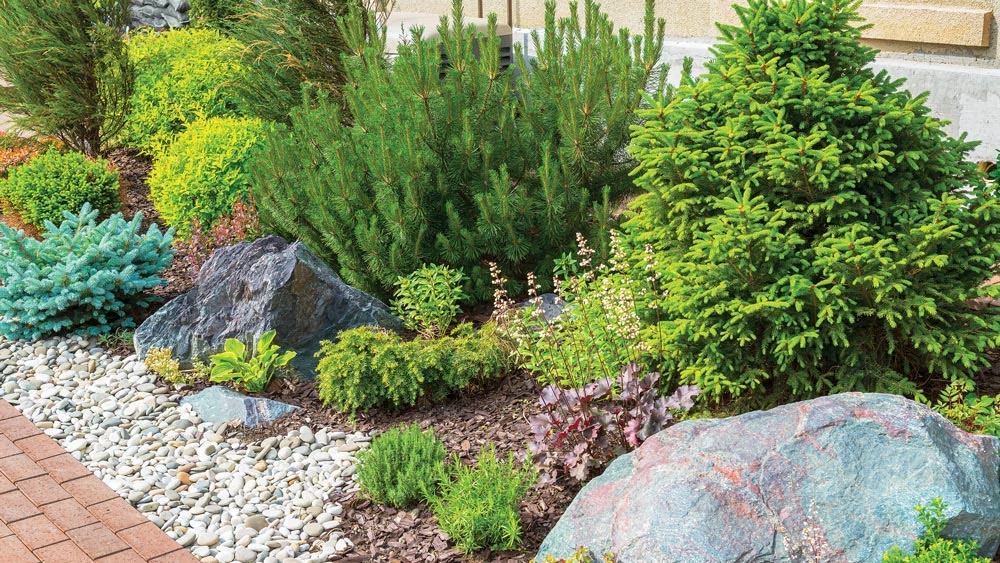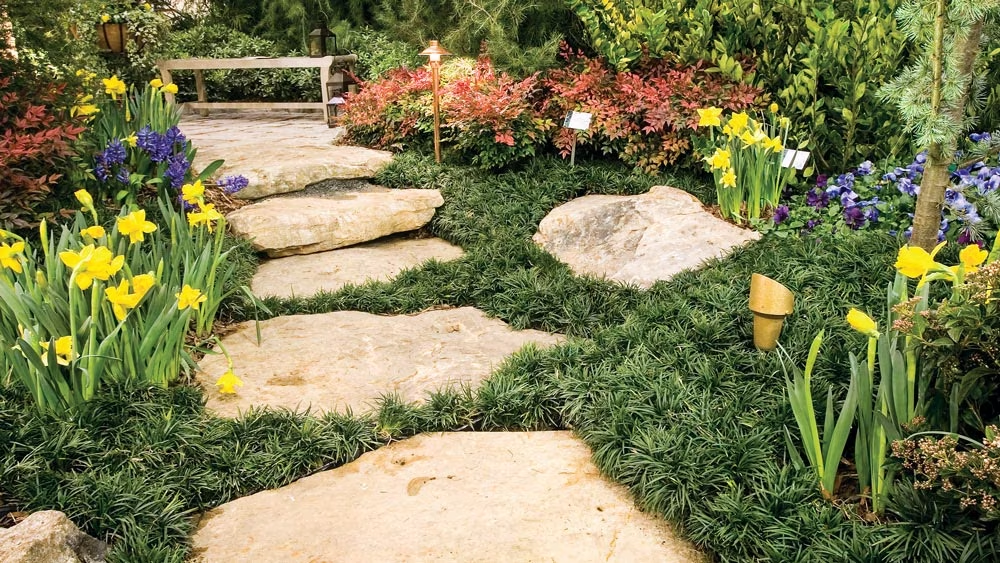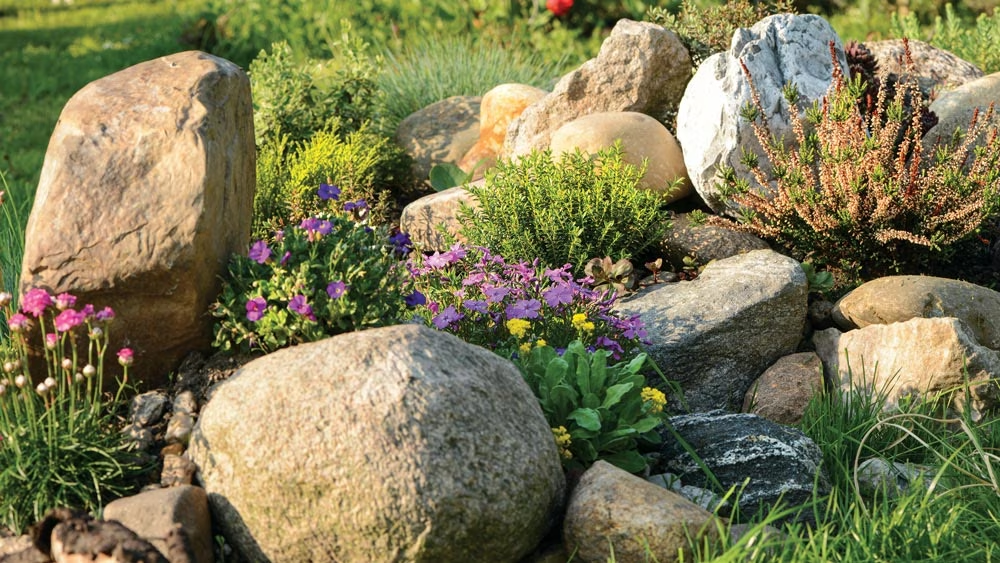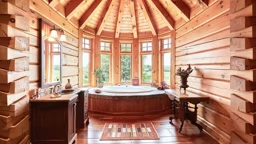When it comes to a natural complement to log and timber homes, stone tops the list. Just think of how dramatic, gorgeous and perfectly suited a rock fireplace is inside a log or timber home great room. That same feeling of balance and woodsy charm can be applied to your landscaping.
Looks aside, an even bigger benefit to stone is that there’s next to no maintenance once you’ve placed it. To make the most out of your choices, consider these tips from Ben Bowen of
Ross NW Watergardens in Portland, Oregon:
Keep it natural.
Ben says that using elements like boulders and other stone can be a boon for any landscape, as long as you allow it to feel organic. “Take a look at boulders in a natural setting,” he says. “They don’t just sit on top of the soil, they’re at least a few inches below grade.” The size and shape of the boulder will dictate how much should be buried, but in general, you want it to look as if it’s been there for ages.
Use gravel wisely.
If you’reusing larger rocks or boulders along a path or you want to make sure it doesn’t shift, Ben suggests laying a base of gravel or even concrete so that it stays in place. This is especially helpful when you’re trying to make a walkway of pavers look more authentic.
Go local.
In many cases, you’d need to be a professional landscaper or geologist to know if the rocks you’re selecting are from the area, but not always. For example, Ben uses boulders that come from the Columbia River Gorge, which is local to them. Those rocks have accents of bronze, tan and blue, and give a landscape a unified feel.
Stay in groups.
A single boulder, while dramatic, can look out of place, as if it’s just been dropped there. Again, you want to emulate the natural look you’d find out on a hike, so incorporate boulders of varying sizes together. For example, Ben often groups them in threes — a number that’s a design rule of thumb, inside or out.
















